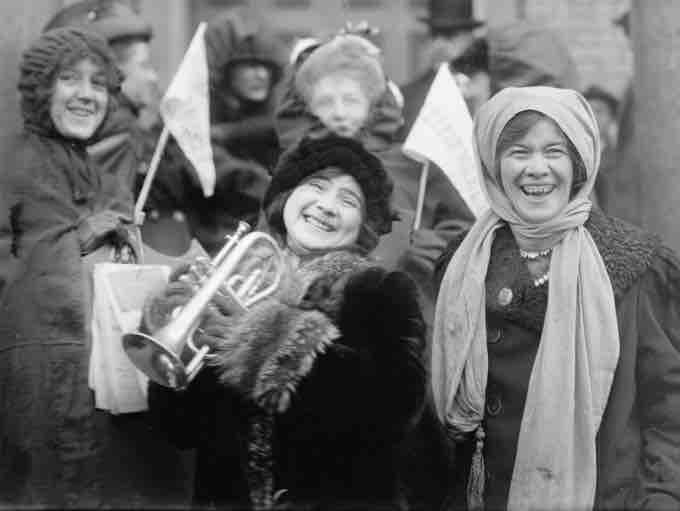Background
The Women's Suffrage Movement refers to social movements around the world dedicated to achieving voting rights for women. Within the United States, the first major call for women's suffrage took place in 1848 at the Seneca Falls Convention. After the Civil War agitation for the cause resumed. In 1869, the Fifteenth Amendment of the Constitution which gave black men the right to vote, split the movement. Campaigners such as Susan B. Anthony and Elizabeth Cady Stanton refused to endorse the amendment, as it did not give women the right to vote. Others, such as Lucy Stone and Julia Ward Howe, argued that if black men were enfranchised, it would help women achieve their goal.
The conflict caused two organizations to emerge, the National Woman Suffrage Association, which campaigned for women's suffrage at a federal level and for married women to be given property rights. As well as the American Woman Suffrage Organization, which aimed to secure women's suffrage through state legislation. After 1900, the groups made a new argument to the effect that women's superior characteristics, especially purity, made their votes essential to promoting the reforms of the Progressive Era, particularly Prohibition, and exposing political corruption .

Women's Suffrage
Supporters of women's suffrage at a political rally
Women's Suffrage in America
World War I provided the final push for women's suffrage in America. When President Woodrow Wilson announced that the war was being fought for democracy, supporters of women's suffrage protested that disenfranchising women prevented the United States from being a true democracy. In 1918, after years of opposition, Wilson changed his position to advocate for women's suffrage as a war measure.
In June 1919, the Nineteenth Amendment to the Constitution, giving women the right to vote, was brought before the Senate, and after a long discussion it was passed, with 56 ayes and 25 nays. It would take until August 1920 for enough state legislatures to ratify the amendment, thus making it the law throughout the United States.
In addition to their strategy to obtain full suffrage through a constitutional amendment, reformers pursued state-by-state campaigns to build support for, or to win, residence-based state suffrage. Towns, counties, states, and territories granted suffrage, in full or in part, throughout the 19th and early 20th century. As women received the right to vote, they began running for, and being elected to, public office. They gained positions as school board members, county clerks, state legislators, judges, and eventually as Members of Congress.